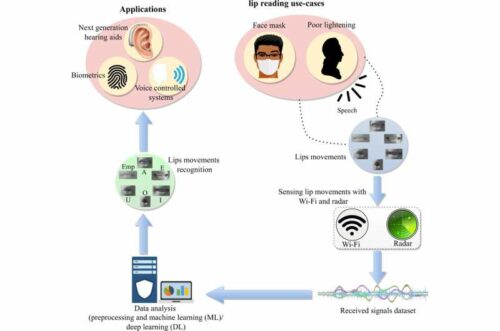A team of engineers and computing scientists introduced a technology that utilizes radio-frequency signals from both a dedicated radar sensor and a wifi transmitter to identify lip movements through masks

Smart hearing aids integrate conventional audio amplification with a second device to gather additional data to assist hearing-impaired people to lip read even masked people. Dr. Qammer Abbasi, of the University of Glasgow’s James Watt School of Engineering, is the paper’s lead author. He said, “Around 5% of the world’s population—about 430 million people—have some kind of hearing impairment. “Hearing aids have provided transformative benefits for many hearing-impaired people. A new generation of technology that collects a wide spectrum of data to augment and enhance the amplification of sound could be another major step in improving hearing-impaired people’s quality of life.
The researchers developed cutting-edge sensing technology to read lips without affecting individuals’ privacy, as they receive data by collecting only radio-frequency which does not require video footage. “With this research, we have shown that radio-frequency signals can be used to accurately read vowel sounds on people’s lips, even when their mouths are covered. While the results of lip-reading with radar signals are slightly more accurate, the Wi-Fi signals also demonstrated impressive accuracy”. “Given the ubiquity and affordability of Wi-Fi technologies, the results are highly encouraging which suggests that this technique has value both as a standalone technology and as a component in future multimodal hearing aids.” says Dr. Qammer Abbasi.
Professor Muhammad Imran, head of the University of Glasgow’s Communications, Sensing, and Imaging research group and a co-author of the paper, added, “This technology is an outcome of two research projects funded by the Engineering and Physical Sciences Research Council (EPSRC), called COG-MHEAR and QUEST”. “Both aim to find new methods of creating the next generation of health care devices, and this development will play a major role in supporting that goal.”
Click here for the Published Research Paper






